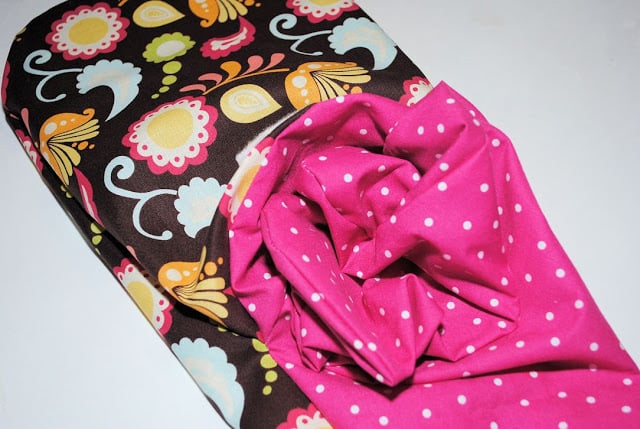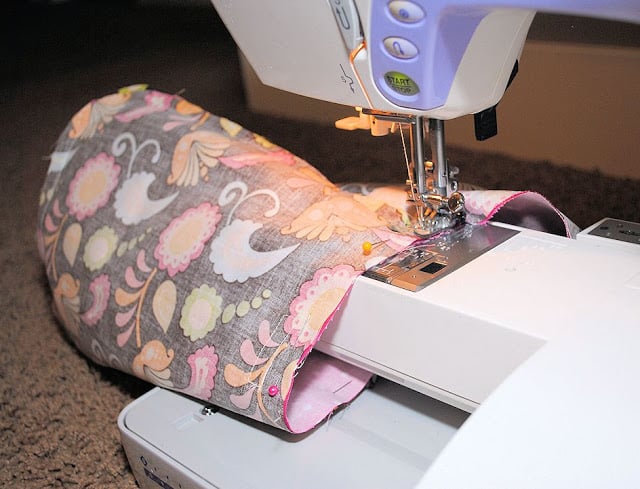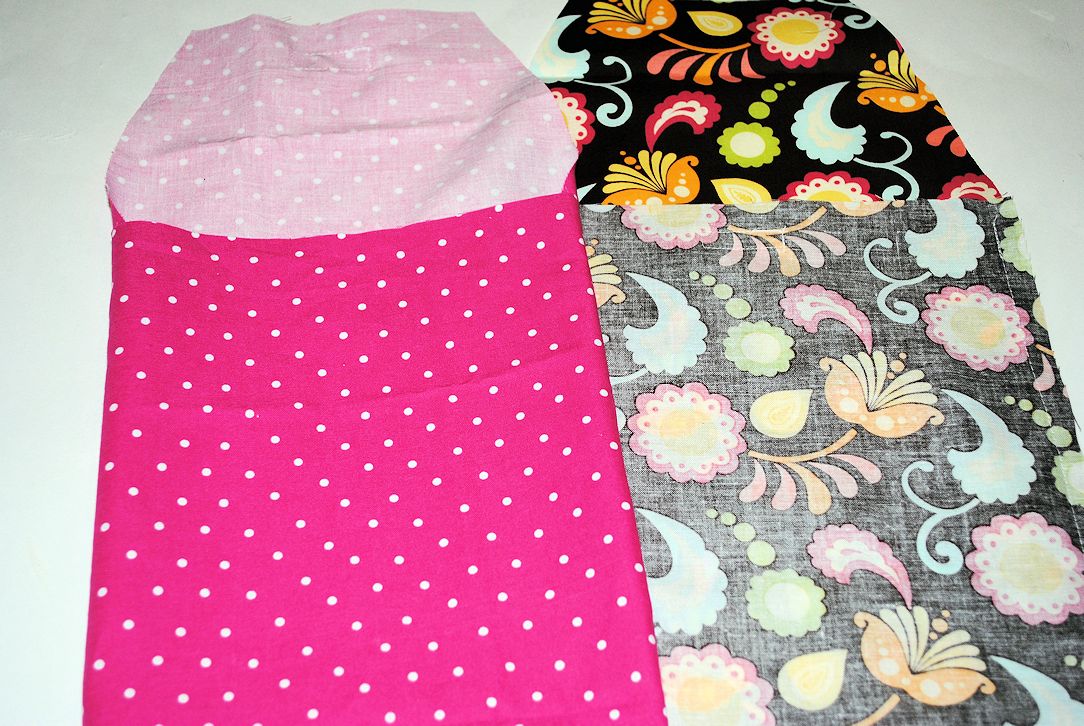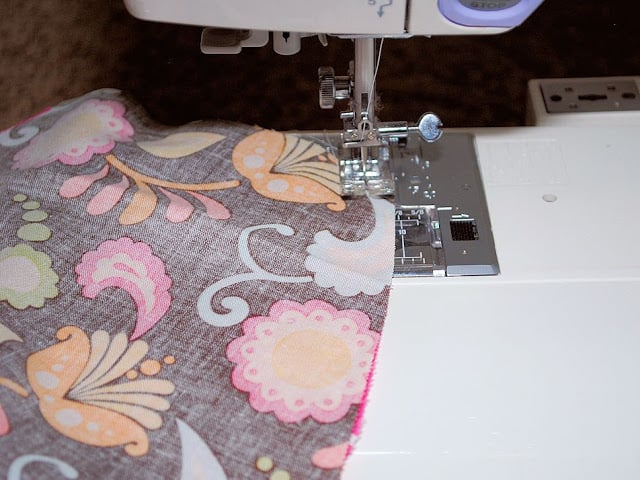41+ Designs do sewing patterns include seam allowance
This is where it readsSeam allowance. If your pattern is a straight line you can mark one long line.

Cute Easy Diaper Clutch Pattern
However the home sewer requires more seam allowance to produce a garment of high quality.

. Seam allowances are then left wide enough for any secondary adjustments. Connect the dots and youve got a 14 inch seam allowance. By Sara Snuggerud in Archives.
Its been awhile since I used Burda. Lay pattern on top of fabric on your cutting table. In general our patterns call for a 14 or 12 seam allowance.
Seam allowance is extra space that is added to a pattern or fabric when creating a garment or project. Answer 1 of 11. In couture workshops they always work from the sewing lines which are thread traced onto the fabric and add large seam allowances for fittings usually 25 cm or more.
And they do all pattern adjustments on the pattern pieces with no seam allowance. Because the standard seam allowance on many sewing patterns is not always the best choice for many. While it doesnt really matter whether or not the edges line up its a bit easier to sew if the seam allowance corners so DO line up.
Use a straight-edge ruler and french curve to measure out the seam allowance around all side and shoulder seams marking curves with dashed lines as you go. Commercial patterns for home sewers have seam allowances ranging from 14 inch to 58 inch. Most patterns call for a specific seam allowance.
Read over the instructions and note anywhere the seam allowance is not 58. Professional machinists are accustomed to sewing with 1 cm seam allowance. Just set the seam gauge to 14 inch and run it along the edges of the pattern piece making a dot every now and again.
58 15 cm unless otherwise stated is included but not printed on multi-size patterns. A seam allowance is the area between the fabric edges and the line of stitches. To add seam allowance to regular seams non-regular seams include cut on fold sides and hemlines.
Make sure you know which seam allowance to add where and take into account a material you work with. Important things to know when adding a seam allowance Cut on fold. In general our patterns call for a 14 or 12 seam allowance.
Cut out your pattern piece around this new line adhere it to the wrong side of. Do not add the seam allowance to the edge of the sewing pattern that needs to be cut on the fold. The Case for Included Seam Allowances When ready-to-wear cut and sew sweaters are made the final pattern includes the seam allowances.
You can add the seam allowance to the paper pattern before you cut it out if youd like. If I were using a tried n true pattern with a tried n true fabric no question I want my seam allowances on that pattern. Seam allowances can range from 14 wide to as much as several inches.
If there is any curve to it though youll need to mark a short line. Seam allowances can range from 14 inch wide to as much as several inches. A seam allowance is the area between the fabric edges and the line of stitches.
Mark with a pencil along the outer edge of the ruler. Most patterns call for a specific seam allowance. The length of seam allowance is based mainly on two things.
Using tailor chalk with a fine edge and a clear grid ruler trace around your pattern adding desired amount of seam allowance. Which seam allowance to add. Some home sewing patterns allow less than 1 cm seam allowance and this makes it very difficult for a home sewer with a domestic machine the width of the foot and the design of a.
I think it all depends on your methodology. When sewing two pattern pieces together you sew on the seam line not the cut edge. The added space then gives you the guidance to sew accurately.
Seam allowance is the added width and measurement added to a pattern or garment. A guide to using the proper seam allowances for any seam. However making the cut edges line up take.
Use the long edge of the ruler a. Lay your marked pattern paper down. The seam allowance is the part in which you sew together the pattern pieces to create the garment.
Use pattern weights or pins to secure your pattern to the fabric. Choose your seam allowance amount. The type of fabric and seam finishing technique used for the project at hand.
A seam allowance is the area between the edge and the stitching line on two or more pieces of material being stitched together. Depending on how you do your seam allowance the cut edges may or may not line up. Before we delve deeper into what fabrics work with what seam allowance it is important to note that the most common seam allowance used on most regular seams is either 58 or 12.
Seam allowances can range from 14 wide to as much as several inches. Lay that line on the outline of the pattern so the outer edge of the ruler is 58 or whatever your seam allowance amount is away from the outline. Single size patterns will have a solid line for cutting and a broken line representing the seam line.
Eve Tokens aka The Creative Curator is a fashion designer creative pattern cutter and sewing pattern designerEve graduated with a 21 in Fashion Design from the University of The Creative Arts in the UK has a BTEC diploma in Creative Pattern Cutting a Foundation Degree in Art Design from Wimbledon College of Art and gained extensive experience in the fashion.

Cute Easy Diaper Clutch Pattern

Cute Easy Diaper Clutch Pattern

Cute Easy Diaper Clutch Pattern

Cute Easy Diaper Clutch Pattern
Make In A Day Quilt Topper For Beginners Jaelan Mincey

Cute Easy Diaper Clutch Pattern
Make In A Day Quilt Topper For Beginners Jaelan Mincey

Cute Easy Diaper Clutch Pattern

Cute Easy Diaper Clutch Pattern

Cute Easy Diaper Clutch Pattern

Cute Easy Diaper Clutch Pattern

Colourful Modern Patchwork Quilt Lap Quilt Throw Rug Etsy Colorful Quilts Quilts Lap Quilt

Olive Pant Suit Magnet By Funky Potato

Cute Easy Diaper Clutch Pattern

Cute Easy Diaper Clutch Pattern

Colourful Modern Patchwork Quilt Lap Quilt Throw Rug Etsy Colorful Quilts Quilts Lap Quilt

Cute Easy Diaper Clutch Pattern